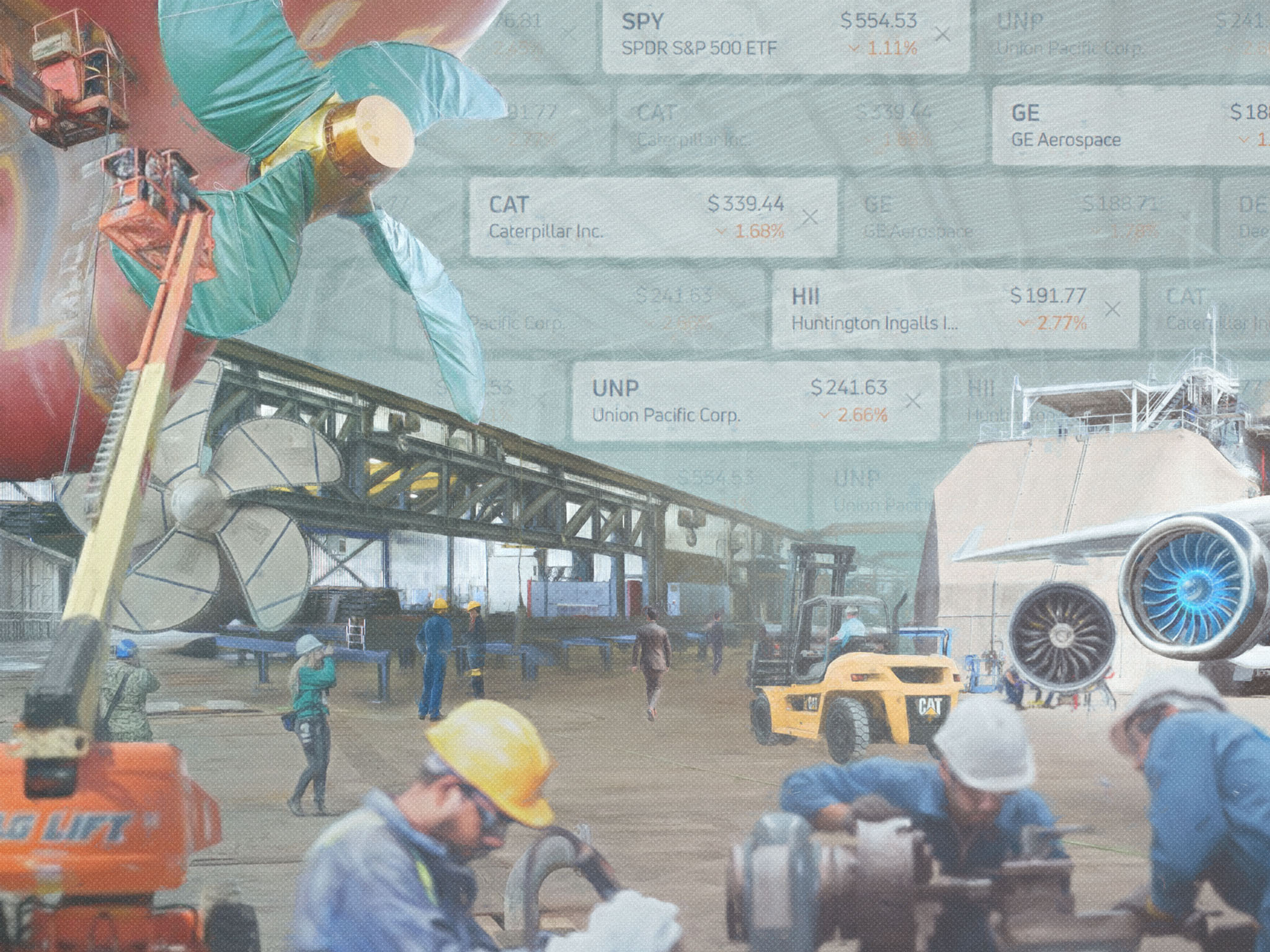Industrial companies are doing better than you might think

Industrial stocks have lagged the overall market over the last 18 months, as the technology sector has ruled the roost, and the S&P 500 Industrials index has slipped 0.19% year to date.
But fundamentals look good for industrial companies, as the near-shoring trend continues. That refers to US companies locating their manufacturing facilities closer to home.
In addition, President Donald Trump is a big supporter of the industrial sector. Just Tuesday, he announced plans to boost the shipbuilding industry. Huntington Ingalls Industries (NYSE: HII), the country’s largest shipbuilder, saw its stock soar 12% the next day.
Even tariffs could have a positive effect on some industrial companies. Tariffs mean higher prices, and if industrial companies can raise their prices by more than their costs rise, that means higher profits. Many industrial companies, particularly in the defense sector, have contracts with the government that allow for higher prices.
In addition, tariffs should help manufacturing companies that face strong foreign competitors, as customers would now have to pay more for the foreign companies’ products. Meanwhile, the global competition of the past 40 years has forced US industrial companies to produce better products more efficiently, putting them in a strong position today.
Company examples
To get an idea of what these companies are doing, have a look at three of the biggest five weightings in the S&P 500 Industrial index.
1. GE Aerospace (NYSE: GE). The jet engine designer, maker and servicer is all that’s left of the old General Electric conglomerate. It powers about 75% of commercial airline flights. Consulting firm Oliver Wyman estimates the global airline fleet will increase 32% over the next 10 years. That gives GE Aerospace plenty of room for growth. It has “the most profitable installed base” of any engine maker, wrote Redburn Atlantic analyst Olivier Brochet, as cited in Barron’s.
2. Caterpillar (NYSE: CAT). The world’s largest construction equipment maker is one of the few stocks to beat out the S&P 500 over the past five years. “While clearly a cyclical company, management has worked intensely to reduce earnings volatility and structurally improve profitability and cash flow,” wrote Morningstar analyst George Maglares. Caterpillar has made its machines more digital over the past few years, increasing their usefulness for customers.
3. Union Pacific (NYSE: UNP). North America’s biggest publicly-traded railroad has benefited from its precision scheduled railroading in recent years. That means simpler rail transport routes with fixed scheduling. Union Pacific has performed well in good times for the industry and bad, thanks to its scale and efficiency. The company forecasts compound annual profit growth in the high single digits or low double digits for the next three years.
So you can see that industrial companies have found a number of ways to better themselves in recent years. And that may have put them in good shape to weather any coming storms.
The author owns shares of Huntington Ingalls.
